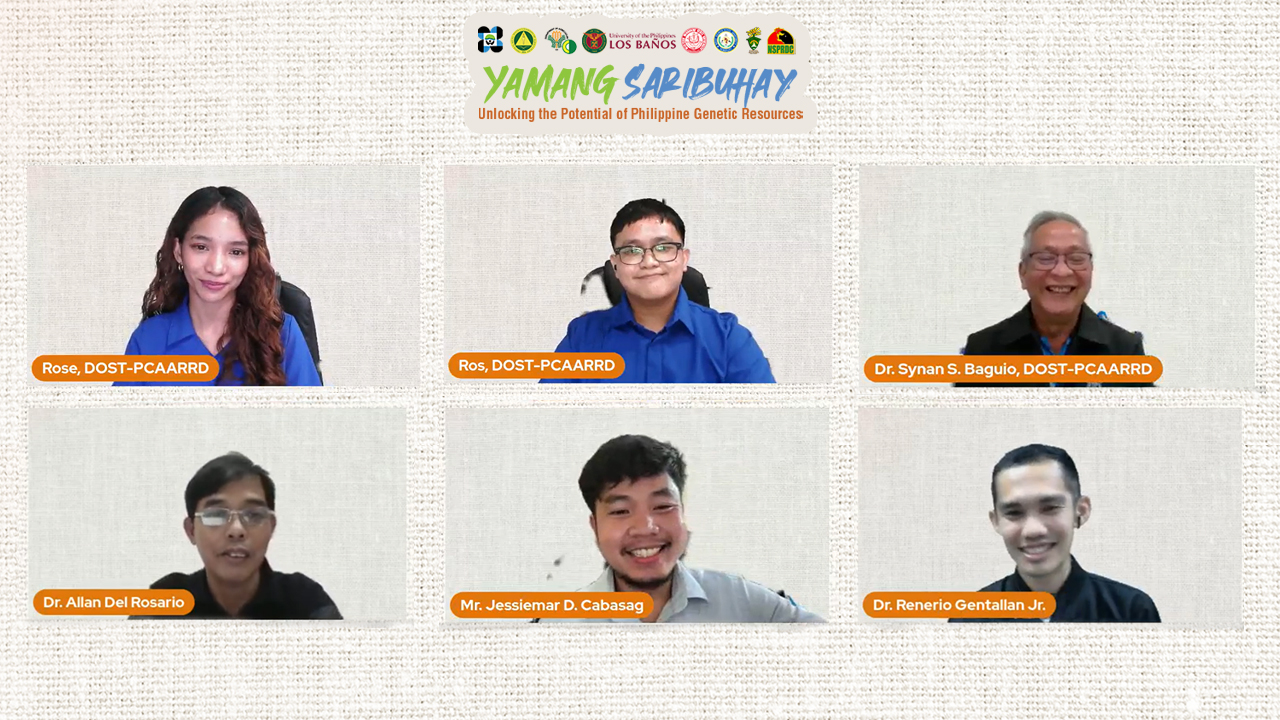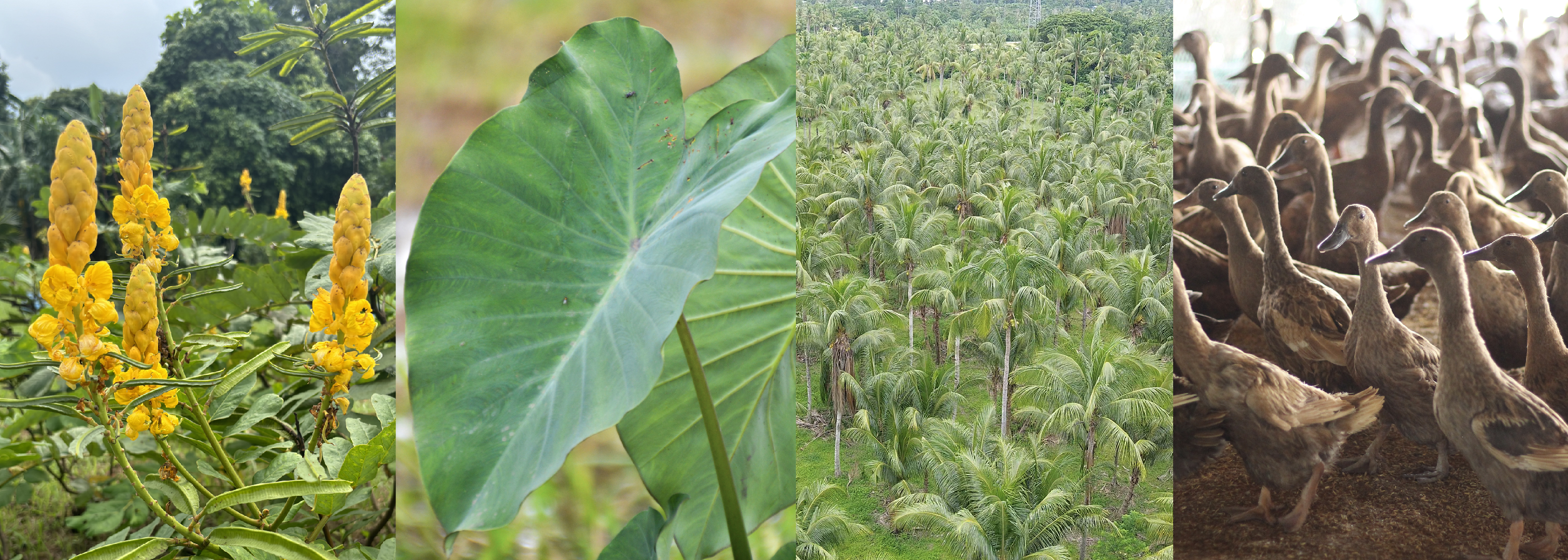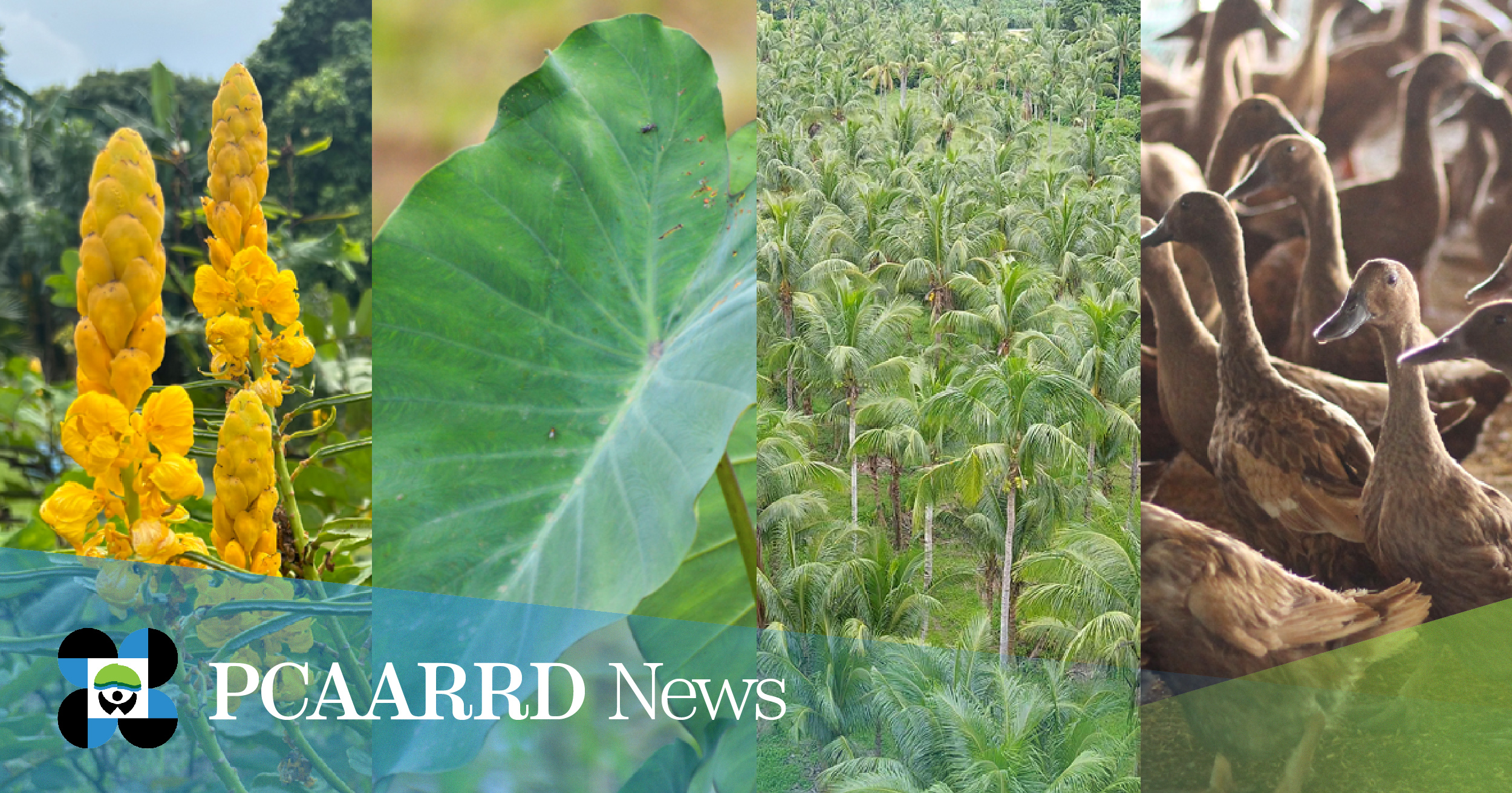Research and development (R&D) initiatives on plant and animal genetic resources took the spotlight during a webinar held in celebration of the 52nd Founding Anniversary of the Philippine Council for Agriculture, Aquatic and Natural Resources Research and Development of the Department of Science and Technology (DOST-PCAARRD).

Crops Research Division (CRD) staff members and webinar hosts Ms. Rosemarie A. De Castro (upper left) and Mr. Eiros Colins R. Penido (upper center) with speakers Dr. Synan S. Baguio (upper right), Dr. Allan B. del Rosario (bottom left), Mr. Jessiemar D. Cabasag (bottom center), and Dr. Renerio P. Gentallan, Jr. (bottom right) during the livestreaming of the webinar, “Yamang Saribuhay: Unlocking the Potential of Philippine Genetic Resources,” on Facebook live. (Image credit: CRD, DOST-PCAARRD)
Organized by the Crops Research Division (CRD), in collaboration with the Livestock Research Division (LRD), the webinar titled, “Yamang Saribuhay: Unlocking the Potential of Philippine Genetic Resources,” featured four experts who shared their accomplishments and ongoing initiatives in the characterization, conservation, and sustainable utilization of the country’s diverse genetic resources on medicinal plants, coconut, indigenous crops, and native animals.
In his opening remarks, DOST-PCAARRD Executive Director Reynaldo V. Ebora emphasized that the experts’ discussions support the Council’s “goal to address food security, enhance climate resilience, and drive economic growth—creating lasting impacts nationwide.”
Dr. Renerio P. Gentallan, Jr. of the University of the Philippines Los Baños (UPLB) presented the accomplishments of their project, “Development, Genotyping, and Preliminary Evaluation of Genetically Stable Planting Materials of Selected Medicinal Plants.” His project focused on identifying promising reference genetic materials of the nine Philippine priority medicinal plants: ‘lagundi,’ ‘luyang dilaw,’ ‘niyog-niyogan,’ ‘pansit-pansitan,’ ‘roselle,’ ‘sambong,’ ‘serpentina,’ ‘akapulko,’ and ‘tsaang gubat.’ This initiative will aid in ensuring a genetically stable supply of raw materials to maintain consistent quality of herbal and pharmaceutical medicinal products, particularly on their toxicity and efficacy.
During the webinar, Dr. Gentallan also officially launched nine descriptor lists that will serve as comprehensive guides for describing and categorizing said medicinal plants to support their management and utilization in genebanks, commercial production areas, and botanical gardens.

Some of the commodities featured in the webinar (from left to right): akapulko (medicinal plants), taro (indigenous crops), coconut, and ItikPINAS (native animals). (Image credit: ICropS, UPLB; CBSUA; PCA-ZRC; and LRD, DOST-PCAARRD.)
Meanwhile, Dr. Allan B. Del Rosario of the Central Bicol State University of Agriculture (CBSUA) showcased the accomplishments of the project, “Survey, Collection, and Characterization of Indigenous Crops in Region 5,” a component of the program, “Boosting the Taro Industry and Indigenous Crops of the Bicol Region.” He delved into the “nearly forgotten” indigenous crops of the Bicol region, offering alternative food sources for Bicolanos.
Some of the indigenous crops in Dr. Del Rosario’s presentation include ‘kulis’ (Brassica oleracea var. viridis), ‘namu’ (Dioscorea hispida), ‘lubi-lubi’ (Ficus pseudopalma), ‘kurakding’ (Schizophyllum commune), and ‘lima-lima’ (Dioscorea pentaphylla).
To highlight coconut conservation efforts in the Philippines, Mr. Jessiemar D. Cabasag of the Philippine Coconut Authority-Zamboanga Research Center (PCA-ZRC) shared updates on the project, “Collection and Evaluation of Promising Coconut Cultivars in Targeted Areas for Conservation, Utilization, and Hybridization.” His team uses an embryo culture protocol that involves extracting embryos from seed nuts to propagate coconuts in a controlled environment, enhancing the efficiency of germplasm collection and propagation.
Dr. Synan S. Baguio, director of LRD, DOST-PCAARRD, presented their efforts in developing and maximizing the economic potential of ItikPINAS and native chicken breeds like ‘Darag,’ ‘ZamPen,’ ‘Caraga Black,’ and ‘Bolinao.’ He also discussed the importance of these native breeds and the Council's initiatives to improve their productivity and profitability.
Approximately 200 students, farmers, researchers, and private individuals participated in the webinar via Facebook Live. The livestream of the webinar is available at DOST-PCAARRD’s Facebook page at https://tinyurl.com/YamangSaribuhay-Webinar.
The event was hosted and moderated by CRD staff members, Ms. Rosemarie A. De Castro and Mr. Eiros Colins R. Penido.

